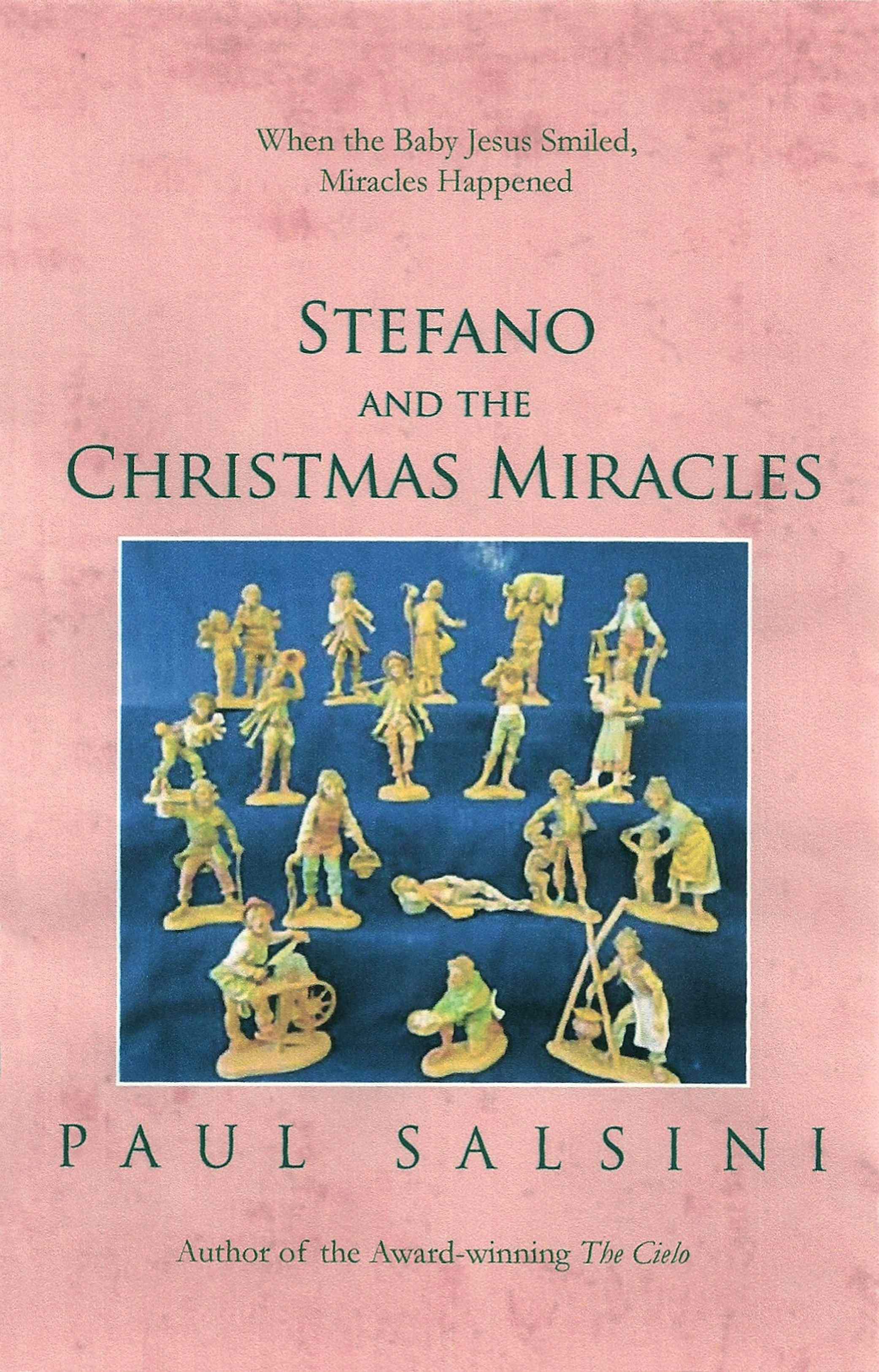A Tuscan Series By Paul Salsini |
A sweeping narrative from World War II to the turbulent 1990s |
Miracles at the Manger
By Paul Salsini
One of the favorite parts of my Christmas season is putting up the elaborate nativity set I acquired, piece by piece over many years, from Italy. The Baby Jesus, Mary, Joseph, the shepherds, angels and kings are present, of course, but my nativity set has many other people who also become part of the scene.
Farmers and tradesmen, merchants and musicians, mothers and sons, old men and young boys-they're all there, ordinary people doing ordinary things who somehow become part of the nativity story. In a way, my presepio or crèche continues the tradition of the spectacular nativity sets that were first created in Naples in the Eighteenth Century. In those, which can still be found in some art museums and private collections, you will see displays so peopled with figures that they appear to be giant stage sets.
Each year, I unwrap my own little figures, forty in all, and after careful deliberation place them in a display that my whole family enjoys.
But as I gazed at these delicately painted images last Christmas, I began to wonder about them. Who were these people? They're not in the Bible. What brought them to the stable? What happened to them there? I was suddenly inspired to give them names and stories.
 New from Paul Salsini! A children's book for Christmas!
New from Paul Salsini! A children's book for Christmas!
I began with an old man being led by a little boy. In my mind he became "Mahalah the Blind Man." And his story? Well, I thought, Mahalah was a shepherd and when he was young he was mauled by a lion that was attacking his sheep. Mahalah had been blind ever since and his grandson, "Rafe," led him everywhere. On the night of Christmas, Rafe guided Mahalah to the stable, the Baby Jesus smiled at the old man and he immediately regained his sight. The Baby's first miracle.
Next to him, a man next to a kettle became Seth the Soup Peddler. He saw how hungry Mary and Joseph were, so he gave them a bowl of his "lentil soup" and after that his lentil soup tasted better than it ever had before. Nearby, a kneeling man I named Nahor the Farmer held out a basket of what I decided were lemon muffins. Yes, lemon muffins. After Nahor gave the muffins to the Baby, there was a never-ending supply of lemon muffins in his cupboard.
I couldn't stop. The man with a broken nose? Jubal the Wool Merchant, who got in a fight with his twin brother; brothers should not go into business together. The boy sleeping with a saddlebag at his side? Mendel the Messenger, exhausted after delivering important papers to Jerusalem.
Sometimes the figures interacted. Hannah the Duck Girl had ventured from her exhausting farm duties to go to the stable. There, she met Kemuel the Bagpiper, a widower who only knew how to play sad music. The Baby saw Hannah and Kemuel talking and suddenly he could play happy music.
Then there was Ephah the Prophet, an ancient man with a staff. Villagers had jeered at him because he couldn't get any prophecy right. When, for example, he forecast a bad harvest, it was the best in years. So when he saw the Baby Jesus and predicted that He would be the savior of the world, no one believed him. More figures, more stories: Achim the Fence Maker, Araunah the Carpenter, Dodo the Mute, Gur the Son of She-Wolf, Sered the Pearl Seller-and many more.
One of my favorite figures is a well-dressed boy holding a reed-pipe. Who was he? What was his story? Well, I imagined he was Kaleb the Musician, the spoiled son of a wealthy priest. When Kaleb wanted to play music with other boys (why wouldn't there have been boy bands then?) his father set him up in a group called the Bethlehem Boys (sort of like the Jersey Boys). They practiced in a stable (a "stable band," the precursor of garage bands) for a cousin's thirteenth birthday (Bar Mitzvahs themselves were yet to come).
But there was a problem: Kaleb couldn't play well. In fact, he was really pretty bad and the other boys wanted to get rid of him. But when the Bethlehem Boys followed a light to the stable and the Baby Jesus smiled at him, Kaleb could suddenly play beautifully.
The figures are made by a company called House of Fontanini at Borgo a Mozzano, north of Lucca, and not far from where my relatives live in Tuscany. Last spring, I was fortunate to tour the plant. Seeing how the little figures were molded and then painted was fascinating enough, but the tour also included a visit to the company's showroom. Hundreds and hundreds of figures were on display. I wanted to take them home and make up stories about every one of them.
Instead, I wrote "Stefano and the Christmas Miracles." I hope you like it. After all, who's to say that these figures don't represent real people who went to Bethlehem? The Bible doesn't tell us everything that happened that miraculous night. And the miracle of Christmas can happen to all of us.